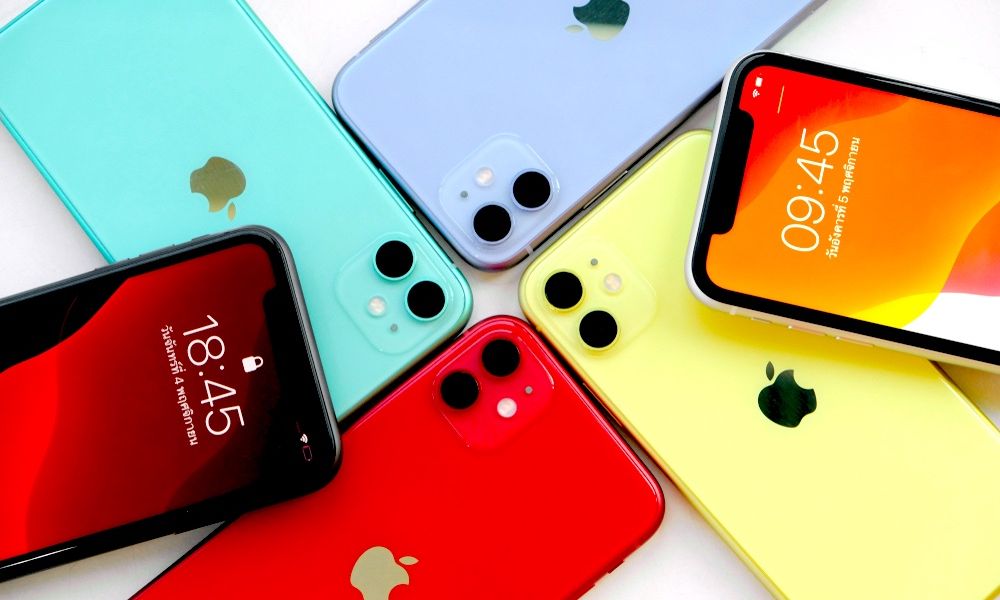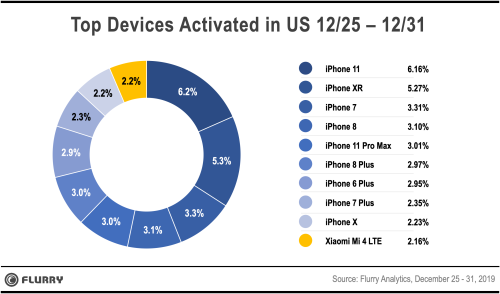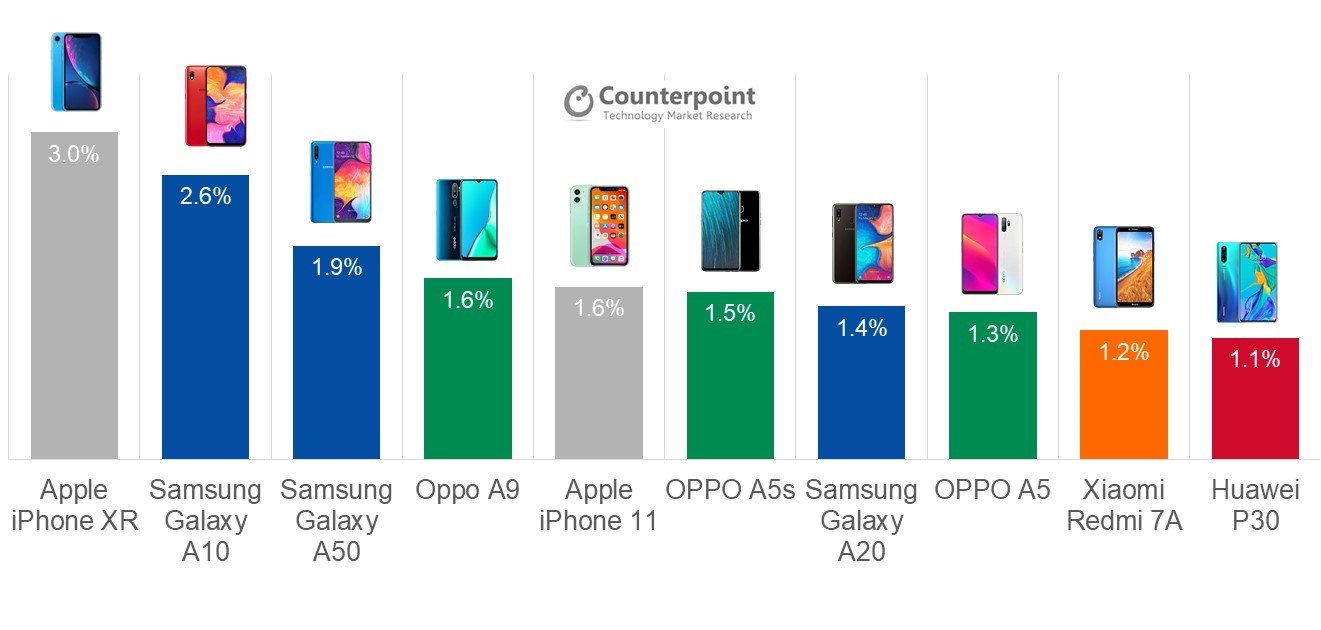The iPhone Dominated Christmas Smartphone Activations
 Credit: Framesira / Shutterstock
Credit: Framesira / Shutterstock
Toggle Dark Mode
It looks like Apple’s two-tier iPhone strategy has been paying off in spades, at least in the United States, with the company’s lower-cost iPhones dominating Christmas wish lists — from the period of Christmas Day through New Year’s Eve, the iPhone was the single most-activated brand of smartphone, and by a fairly wide margin too.
According to a report by Flurry Analytics, Apple’s iPhones actually accounted for 43 percent of all device activations during that time period, and while that’s not an overall majority, it was almost double the market share that any other single smartphone manufacturer could claim — for the same time period, Samsung came in second place at only 23.5 percent.
Even more interesting is that of the top ten brands of devices activated in the U.S. from Christmas Day onward, iPhones took the top nine spots, with Xiaomi’s Mi 4 LTE coming in tenth. However, dominating the top of that chart was Apple’s iPhone 11, followed by last year’s iPhone XR, which not only validates Apple’s approach of selling a lower-tier — but still well-equipped — model of its iPhone, but also its choice to continue selling last year’s model. Collectively, those two iPhone models accounted for 11.43 percent of all smartphone activations during the holiday season.
Interestingly, the iPhone 11 Pro Max came in fifth place, behind the iPhone 7 and iPhone 8, once again suggesting a penchant for lower cost iPhones — at least when given as Christmas gifts — as well as smaller iPhones; the iPhone 7 Plus and iPhone 8 Plus models were also represented, but came in behind the iPhone 11 Pro Max. Even more interesting is that the iPhone 11 Pro didn’t make the top ten at all.
iPhone XR: The Runaway Success
Of course, Apple’s iPhone XR has been dominating North American smartphone sales even since it was first released. According to a recent report by Counterpoint Research, it has remained the top-selling smartphone throughout all of 2019 — even after Apple released the iPhone 11.
According to the report, the iPhone XR actually took 3 percent of the smartphone market share last quarter, edging out Samsung’s Galaxy A10. By comparison, the iPhone 11 made it into the top ten smartphones during its launch quarter, but came in at only 1.6 percent. It’s worth noting, however, that it hasn’t had as much time to gain traction, and even the iPhone XR didn’t reach the top of the list until after its first quarter.
Analysts also estimate that the iPhone XR has been responsible for one-quarter of total Apple sales over the last quarter and has been the bestselling model for Apple across all of its regions. While Apple has struggled to sell its higher-end iPhones in China, the iPhone XR has been a bigger hit there, especially after Apple made pricing adjustments to make it more attractive to Chinese consumers.
Trend Toward Wallet-Friendly Smartphones
The data from both Counterpoint and Flurry reveal that consumers are eschewing premium-priced iPhones in favour of less expensive models. None of Samsung’s flagship models cracked the top ten for smartphone sales last year either, and according to Flurry’s data, the most-activated Samsung over the holiday season was also the more budget-priced Galaxy A10e, which fell into eleventh place, just missing the top ten list.
So it’s not only Apple’s “Pro” iPhones that are being passed over in favour of more wallet-friendly options, but rather it’s a trend that’s being seen across the board. As the price of premium flagship smartphones keeps increasing, and carriers shift away from the generous subsidies of yesteryear, it’s become less common for customers to buy into the highest-end devices, especially with lower-cost models that provide the same level of performance and deliver more than enough features for most users.
It’s unclear whether Apple expected the iPhone XR to be the hit that it was, but after many reviewers pegged it as the iPhone that most people should buy, Apple realized it needed to adjust its branding to ensure that its most popular iPhone wasn’t seen a second-class citizen to its more premium models, and fully embraced this strategy with the iPhone 11 and iPhone 11 Pro naming convention.
If recent reports are to be believed, not only does Apple plan to continue this into the 2020 iPhone lineup, but it will actually release an even lower-cost “iPhone 9” as an entry-level model that would retain the iPhone 8 design, effectively following in the footsteps of the 2016 iPhone SE. The popularity of the iPhone 7 and iPhone 8 over Christmas suggests that there’s still a lot of demand for iPhones with the more traditional design, and this will likely be one of five new iPhone models expected next year. Of course, that list will undoubtedly also include the “iPhone 12” and “iPhone 12 Pro” models, which are expected to all use OLED displays next year (although the “Pro” models will likely still get better OLED displays), and of course include 5G technology for the first time.








